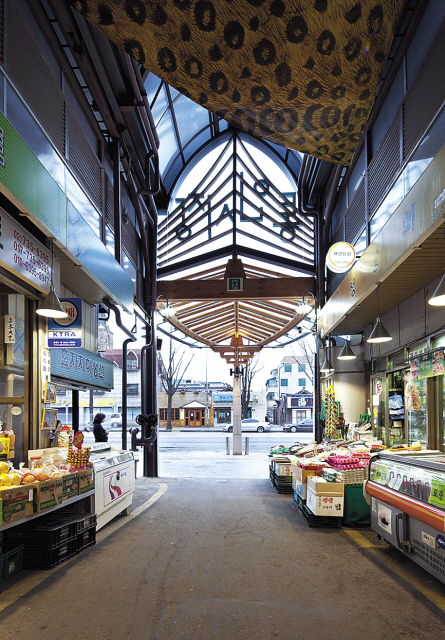Going public
At Tongin Market in central Seoul near Gyeongbokgung Palace, a Korean traditional gazebo-inspired structure has been erected. A wooden pillar holds up traditional-style wooden rafters, and the glass roof implied a modern touch. It received the Korean Public Design Award in 2012.
|
|
| The main gate of Tongin Market in central Seoul, inspired by the Korean traditional gazebo (Courtesy of doojin hwang architects) |
“The main entrance of the market that has decades of history was hardly seen from the boulevard. In order for it to be noticed by the passersby and the neighborhood, I pulled out one shaft to the middle of the street,” said Hwang Doo-jin, the architect of the gate.
“It was also a marriage of Korean and Western architecture, which is very tricky,” said the architect, who is famous for a series of hanok and hanok-inspired buildings.
Dodam Dodam Hanok Children’s Library is the 14th Lovely Library branch (pictured above). It occupies a hanok, or traditional Korean home, in Sungin-dong on the eastern side of Jongno. Dodam dodam is a Korean phrase for “children growing up without much trouble.”
Matching its hanok setting, 20 percent of the library’s 2,889 children’s books are related to Korean traditional culture. In addition, the library runs educational programs for children that teach them Chinese characters and calligraphy.
The Gahoe-dong Catholic Church near the Bukchon Hanok Village, is known as the place where the country's first mass was held by Father James Zhou Wen-mo in 1795.
This catholic church has adopted hanok style and has nice Korean style garden as well.
On the first floor of the church, an exhibition hall showing the history of the Roman Catholic of Korea is installed.





댓글 없음:
댓글 쓰기